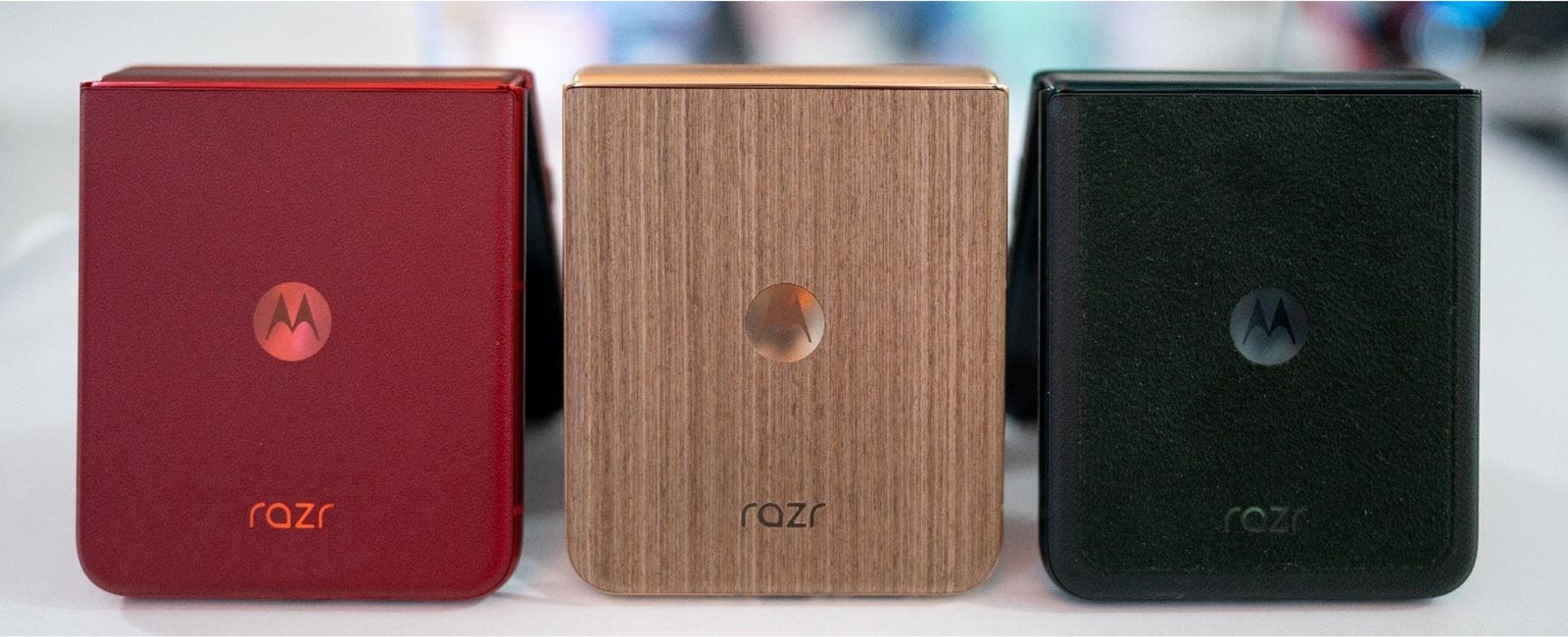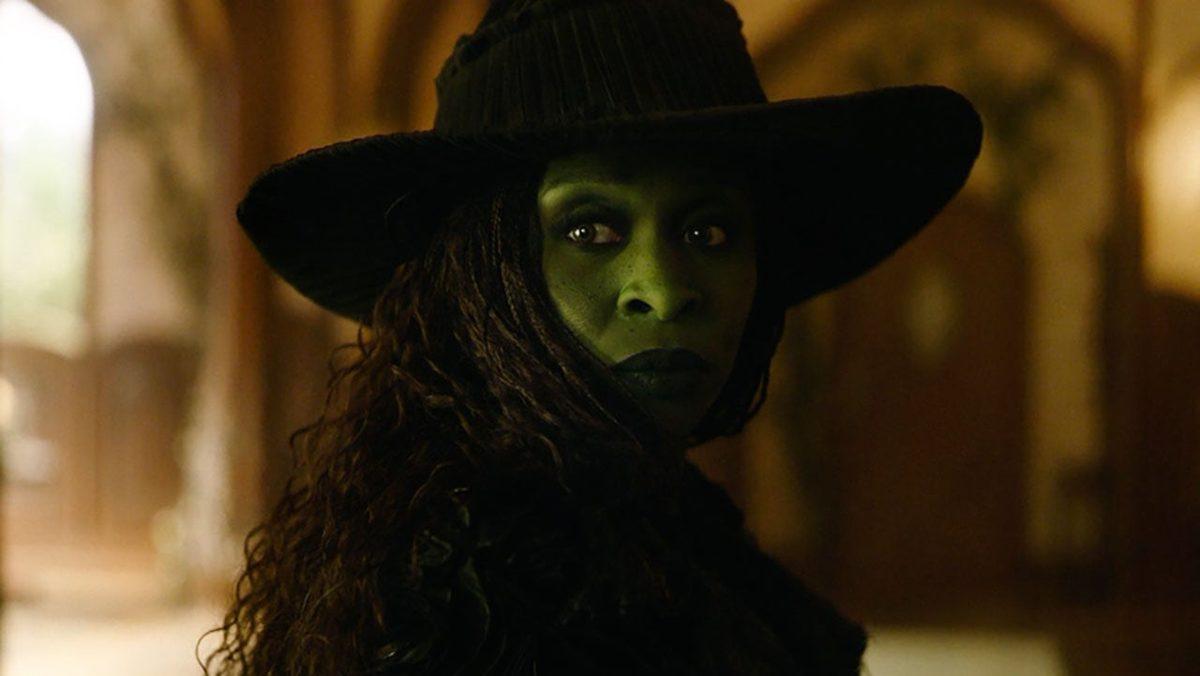The Razr 60 Ultra series in the new Pantone colors and materials
At a recent two-day event in New York City, Motorola announced its updated Moto Razr lineup, which features a new three-tier strategy that expands the range of foldables offered by the company. The new Razr lineup also introduces broader AI capabilities that enable the user to do more with less direct interaction with the phone; this includes features like Pay Attention, Catch Me Up, Explore with Perplexity or Remember this. Speaking of Perplexity, Motorola also announced a slew of new AI partnerships that are part of Moto AI that enable an even more capable AI experience on Moto’s latest Razr devices.
(Note: Motorola’s parent company, Lenovo, is an advisory client of my firm, Moor Insights & Strategy.)
The New Razr Lineup
To build on the growing success of the Razr line, Moto has introduced a high-end third tier for the Razr 60 lineup. This new tier has been given the “Ultra” distinction, and it incrementally upgrades many of last year’s Razr+ capabilities in a similar stylish form factor, but with better materials and enhanced specs. I believe this is Moto’s way of continuing the momentum it has built with younger and more female audiences for the Razr, which has earned the company arguably the biggest customer base of iOS switchers to Android — with 25% of its customer base coming from iOS. Switching between iOS and Android isn’t very common, considering the maturity of both markets in the U.S., yet the 25% figure builds on last year’s 20% figure, making the iOS switching an accelerating trend.
Part of Moto’s success has come from continuing to do things differently from the rest of the smartphone market. This has translated to more colorful designs that draw on Motorola’s partnership with Pantone to research trending colors and offer them to its customers; Moto also uses Pantone to certify display calibration as well. For this year’s Ultra model, Motorola is introducing Pantone Rio Red, Pantone Scarab (dark green), Pantone Mountain Trail (brown) and Pantone Cabaret (burgundy). The Rio Red will be offered as a pleather material, Scarab in an Alcantara synthetic suede material and Mountain Trail in a real wood finish. I’m glad to see that Moto cleverly chose a dark color for the Scarab Alcantara material, because it would stain over time if it were a lighter color. I also very much like the wood finish but am not sure how much I need a wooden finish on my phone — even if it is a callback to older Motorola wood finishes. Motorola has many other color options for the Razr+ and the base model Razr as well, which goes against the general trend that phones must be derivatives of black, silver or white.
In terms of specs, there’s a very clear scaling of performance across the Razr family. The new base model Razr 60 has been upgraded to the MediaTek Dimensity 7400X from last year’s 7300X. The Razr 60 Plus gets last year’s high-end Razr chip, Qualcomm’s Snapdragon 8S Gen 3. The Razr 60 Ultra, the new high-end flagship tier, gets Qualcomm’s latest Snapdragon 8 Elite, which matches Samsung’s Galaxy S25 series and beats Samsung’s current foldable lineup, which features last year’s SoCs. Motorola is also scaling memory across its good, better, best lineup with 8GB, 12GB and 16GB of RAM. Storage is 256GB for the Razr and Razr+ models and 512GB for the Ultra.
Motorola has also scaled charging speeds to match the tier of the device, with the base-model Razr offering 30-watt charging, the Razr+ offering 45-watt charging and the Razr Ultra offering 68-watt charging, the fastest of any foldable available in the U.S. Battery capacities are a bit inconsistent, with the Razr+ having the smallest 4000 mAh battery, followed by the 4500 mAh battery in the base model Razr and 4700 mAh in the Ultra. This likely means that the base model Razr 60 will have the longest battery life thanks to its smaller screens, but also that the Razr 60 Ultra will have very competitive battery life even with its larger 4-inch cover screen and whopping 7-inch internal foldable display.
Getting into the camera capabilities, all three cameras come with Moto’s new AI-enhanced Group Shot feature, which captures a burst of images and generates the best single picture out of all those images. The camera hardware configurations scale up from the base Razr 60, which has a 50MP main camera, 13MP ultrawide and 32MP selfie camera, which is fairly competitive. The Razr+ features dual 50MP main and telephoto cameras along with a 32MP selfie camera, matching the specs as last year’s Moto Razr+. The Razr 60 Ultra, however, changes things up by offering a triple 50MP camera configuration with a 50MP ultrawide, 50MP main and 50MP selfie camera. This will likely result in better group shots and macro photography.
Motorola reaffirmed the brand’s durability by gaining IP48 certification across all three devices. Moto has also touted the new titanium hinge for the Razr lineup, which it claims is up to 4x stronger than last year’s surgical-grade stainless steel. Motorola has also detailed the Razr Ultra’s outer screen with Corning Gorilla Glass Ceramic, the first flip phone to come with this durable glass technology. Motorola says that it also optimized the ultra-thin glass inside the foldable display to reduce the bend radius of the hinge, reducing the crease by 30%.
Motorola is charging an entry price of $699 for the base-model Razr 60, while charging $999 for the Razr 60 Plus and $1,299 for the Razr 60 Ultra. The first two prices are the same that Motorola offered on last year’s Razr 50 family. The $299 price increase for the Ultra seems justified to me when you consider the 4GB increase in RAM, doubled storage, faster and higher-tier processor, slightly increased inner display and improved camera configuration. Pre-orders began May 7 in the U.S., and the phone went on sale on May 15.
Moto AI Features And Partnerships Galore
Motorola leaned heavily into AI capabilities with the new Razr lineup, partnering with Google for Gemini, Microsoft for Copilot+, Meta for Llama and Perplexity for Search. Motorola says that Moto AI will help the user decide which AI model or framework to use for each task; for instance, Catch Me Up is powered by Llama. Motorola didn’t say which AIs power its Look and Talk, Next Move, Playlist Studio or Image Studio features. Motorola also didn’t give many details about its Copilot+ integration, other than saying that users would be able to access it directly via Moto AI, which should give users more choices of which models they want to interact with.
Motorola President Sergio Buniac talking about Motorola’s successes with Razr
What Moto did announce at the event was Perplexity’s AI-enhanced search, which it calls Explore with Perplexity — the first time a smartphone OEM has integrated Perplexity into a device. Motorola is also bundling three free months of Perplexity Pro, showing the deep relationship between the two companies. During the announcement event, Perplexity’s CEO Aravind Srinivas came onstage to announce the partnership. I’m a big user of Perplexity, so I’m glad to see it getting more recognition, and happy with Moto for recognizing the company’s fast-growing user base. In a twist of “coopetition,” Perplexity launched its own AI assistant for the Perplexity app on the same day as its announcement with Motorola.
With Google, Moto continues to draw on Gemini for enhanced AI functions, including a new Google Photos experience that enables Google Photos from the cover screen. Gemini Live is still an integral part of the device and can be activated via the AI button on the Ultra, which was previously used as the power button. Motorola is also bundling three months of Google One AI Premium, which includes 2TB of cloud storage as well. Motorola was the second OEM after Samsung to get deep Gemini integration last year with Gemini Live and is clearly a strong part of Google’s strategy to enable better AI on more devices outside of Google Pixel.
In addition to Meta’s involvement with Llama for its Catch Me Up feature, the company is also deepening the XR integration of Moto devices into the Quest family via the Smart Connect app on Lenovo PCs. This will result in smartphone virtual mirroring inside Quest headsets, enabling a better user experience for Motorola users and a less isolated experience for anyone in mixed reality or VR. This has been a long time coming, but I believe it’s one of the best ways to ensure that people in VR or MR don’t feel like they are being entirely cut off from the real world while inside a headset. I’m surprised that there weren’t also deeper integrations with WhatsApp or Instagram, since those are also quite relevant for Meta.
Moto’s Push Into Wearables
Last but not least is Motorola’s continued expansion into wearables designed to complement its smartphones. The biggest surprise was Motorola’s new Buds Loop earbuds, which it designed with Bose and Swarovski to offer a more fashion-forward design that people might want to wear like jewelry. Motorola hasn’t given these earbuds a price or a release date yet, but I expect that they will carry a bit of a premium with the Sound by Bose designation and Swarovski crystal encrusting. I would love to see Motorola deepen its partnership with Swarovski to offer wearables that are also fashionable and complement the wearer’s outfit.
In addition to the Moto Buds Loop, the company talked about the Moto Watch Fit, a fitness-focused watch that runs an RTOS rather than WearOS, which simplifies the software experience. It also enables an ultra-long battery life, as evidenced by the company’s claim that the Moto Watch Fit can run 16 days on a single charge. The watch uses Gorilla Glass 3 and has an IP68 rating for an active lifestyle. It comes with more than 100 sports modes and includes heart-rate monitoring, calorie tracking and sleep data. The watch has a 1.9-inch OLED display with up to 1000 nits of brightness, which should work well for outdoor use. Motorola hasn’t given a launch date or pricing for this watch, but I would expect it to be fairly inexpensive as Motorola eases its way back into the smartwatch market.
I expect that Motorola’s push into wearables will continue with more earbuds and watches that build on these new product offerings. Perhaps we’ll even see it offer a WearOS-capable watch one day, or high-end headphones to compete with the likes of Apple. I believe that Lenovo and Motorola want to have wearables that complement their smartphone capabilities and enhance the AI on the device. Indeed, I believe this will be necessary if the company wants to compete in AI-driven wearables — the direction that the market is moving in.
Analyst Takeaways
I am very happy to see Motorola’s new Razr 60 lineup and the upgrades we’re seeing across the board. Motorola clearly grasps the importance of AI-driven functionality that enhances and simplifies the user’s daily interactions with their phone via hands-free features such as Pay Attention or Look and Talk. I think Look and Talk is really an interesting feature because it uses the phone’s camera to verify the user is looking at the device and enables the user to interact with the phone hands-free, which I can see being useful in a lot of ways.
Motorola’s continued push into new colors and materials is also a great way for the company to differentiate from the rest of the smartphone industry, which is mostly focused on metal and glass. I think Motorola can use its differentiated design and AI approach to supercharge its growth in the foldable market, expand into more markets globally and continue to capture more iOS users on Android as well.
Moor Insights & Strategy provides or has provided paid services to technology companies, like all tech industry research and analyst firms. These services include research, analysis, advising, consulting, benchmarking, acquisition matchmaking and video and speaking sponsorships. Of the companies mentioned in this article, Moor Insights & Strategy currently has (or has had) a paid business relationship with Google, MediaTek, Meta, Microsoft, Motorola (Lenovo), Qualcomm and Samsung.








